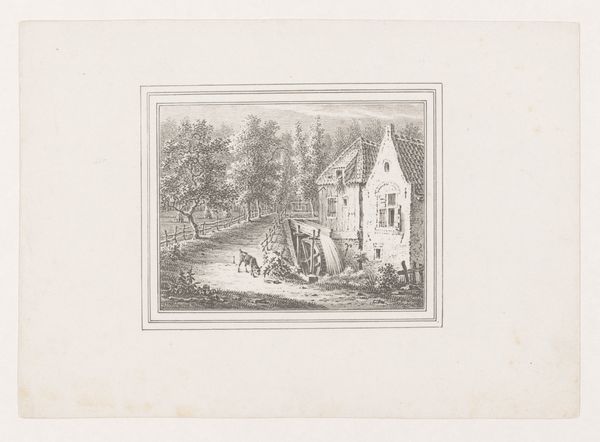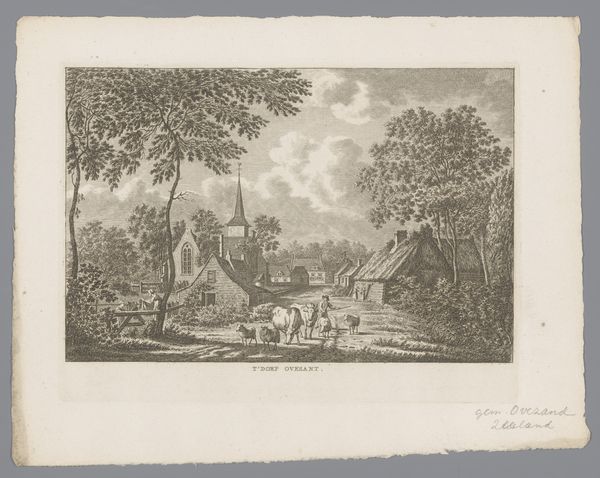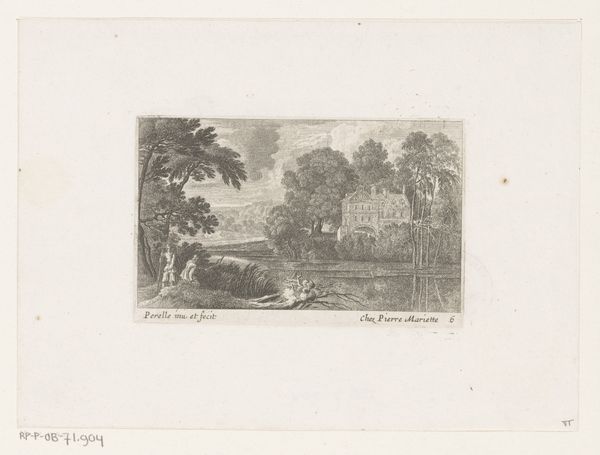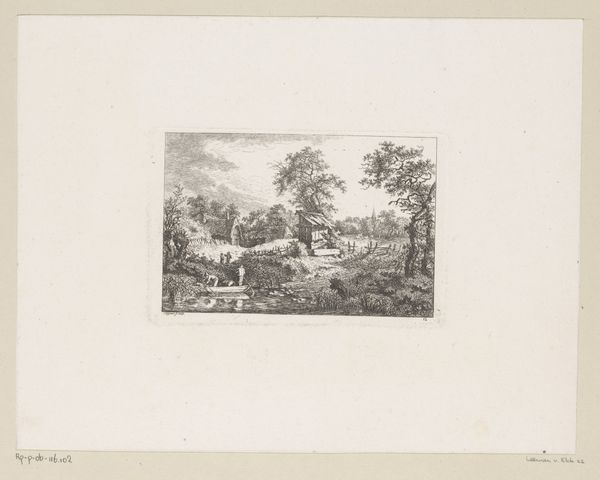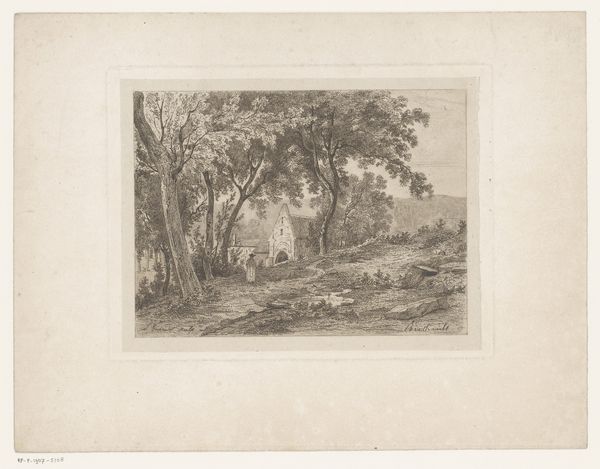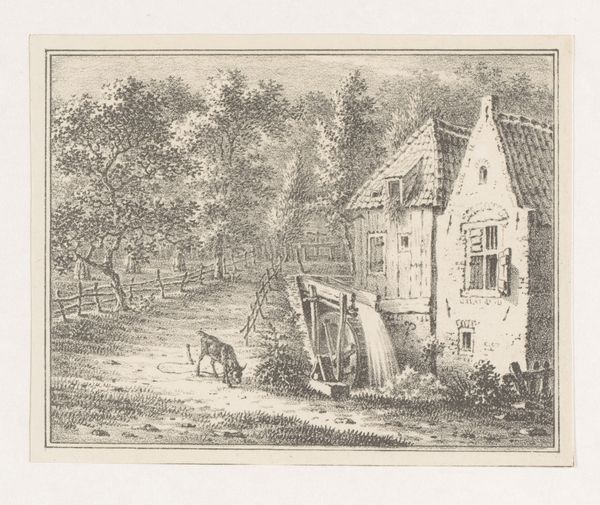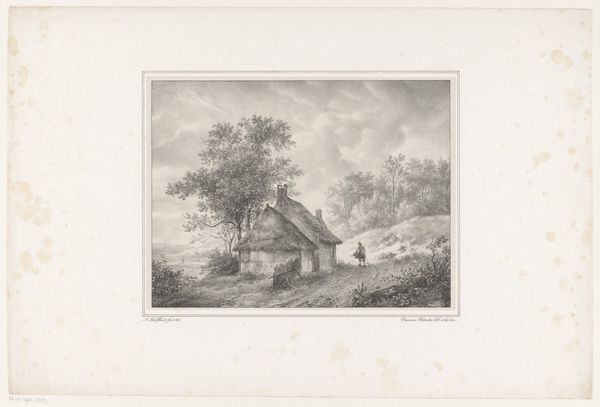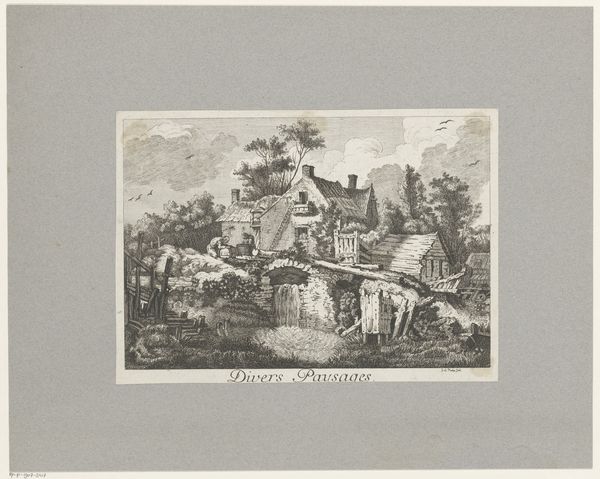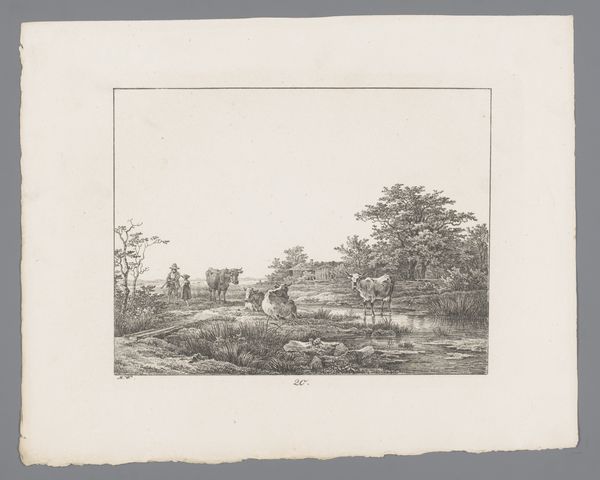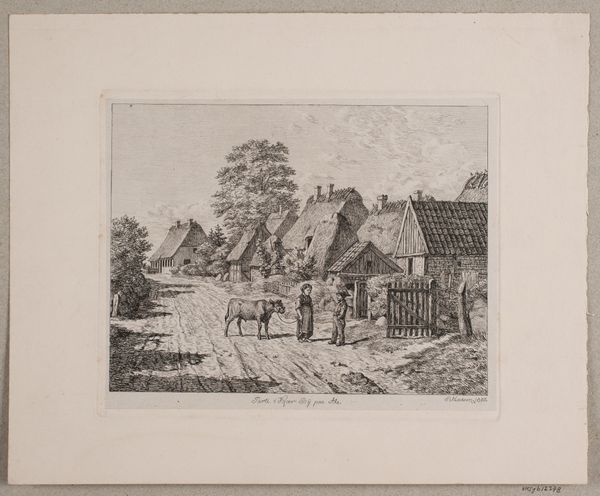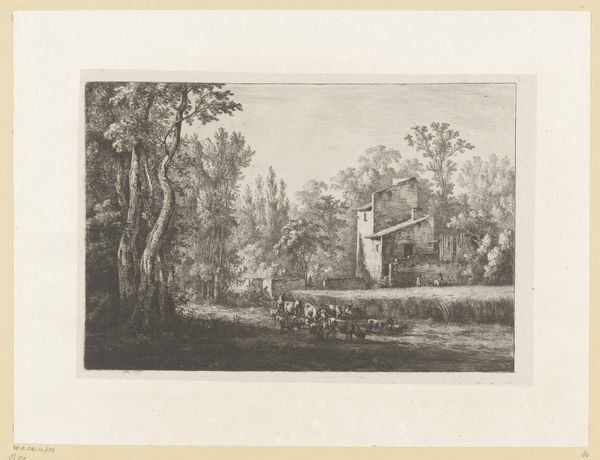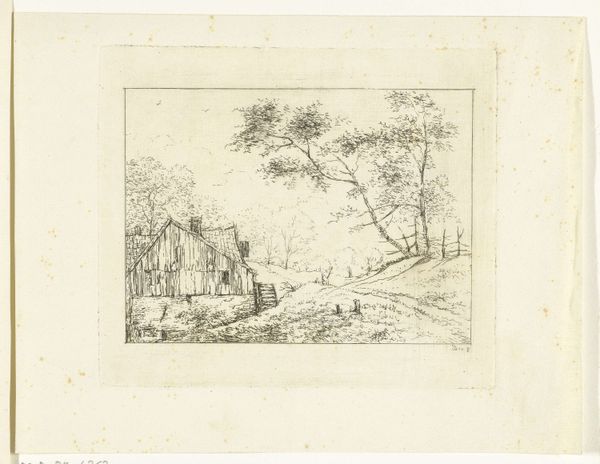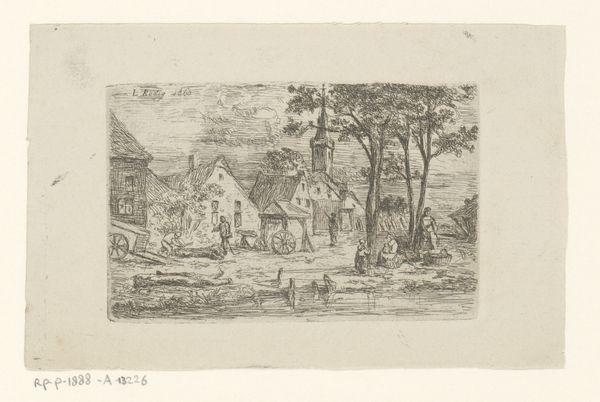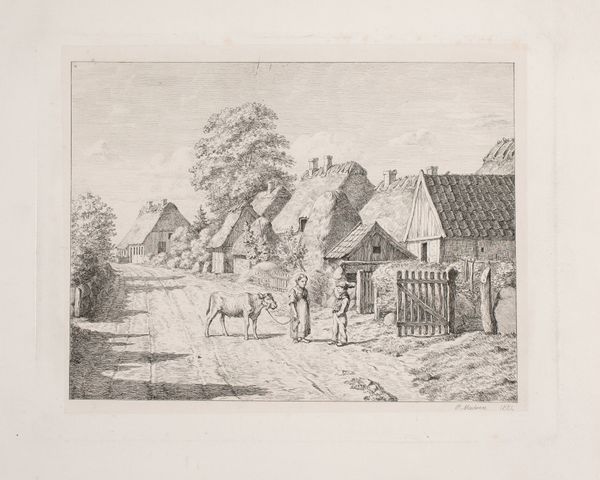
drawing, print
#
drawing
#
neoclassicism
# print
#
landscape
Dimensions: height 155 mm, width 198 mm
Copyright: Rijks Museum: Open Domain
Curator: This drawing from circa 1825 by Pieter de Goeje is entitled, "Landscape with Watermill and a Grazing Goat on a Leash". It’s an interesting example of neoclassical landscape work done in print. Editor: I’m immediately drawn to the quaint stillness of it. It's a world simplified to the comforting rhythm of water and a peacefully grazing animal. There's a kind of pastoral ideal at play, isn't there? Curator: Exactly! Landscape depictions during this time weren't just about mirroring nature; they carried symbolic weight. Consider the socio-political context—the burgeoning industrial revolution juxtaposed with idealized agrarian life. Images like this helped to preserve a vision of a more pastoral past in the collective memory. Editor: The watermill itself stands as a prominent symbol here. Water has always represented purification and cyclical renewal, doesn’t it? It links nature's power to the everyday, providing energy while sustaining life, I suspect it symbolizes a harmony with nature that was beginning to be questioned. Curator: Absolutely. Furthermore, watermills like these became vital hubs in the rural economy and started shifting the structure of rural economics during this era. Their depiction points towards broader industrial and social shifts that influenced landscape representations. Editor: Look at how the artist rendered the goat! Even the choice of the leash has subtle hints; the animal appears contained but free to consume – this implies perhaps restrained freedoms? The simple depiction suggests harmony and plenty, but perhaps the tethering of this peace holds more significance than we assume. Curator: It highlights a central question in representations like this—what, exactly, are we glorifying and how do broader historical and social systems inform these visuals? Editor: I see it too. Overall, reflecting on this piece invites reflection, encouraging one to find their harmony in an ever more mechanical world. Curator: An important point and one to carry forward, remembering that depictions are more than simply pleasing, and offer us perspectives to the past.
Comments
No comments
Be the first to comment and join the conversation on the ultimate creative platform.
